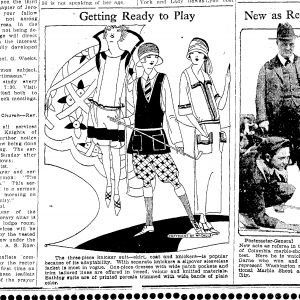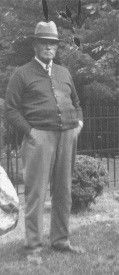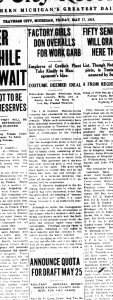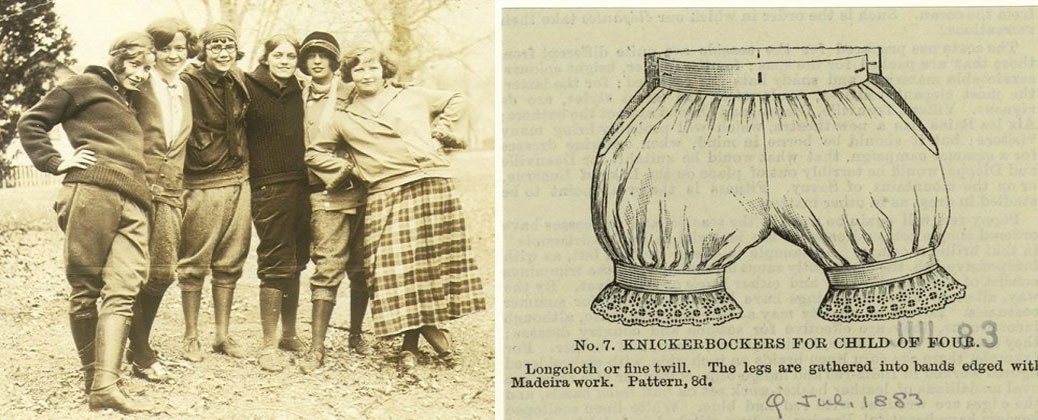It was June, 1922, Traverse City, Michigan and trouble was brewing: Accompanied by a parent, two 14-year old girls appeared on Front Street, wearing knickers, apparently “displaying their wares” (showing too much) or else wearing other articles of clothing with “fashionable trimmings.” (clothing too suggestive). Local police had been instructed what to do if confronted with obvious displays of immorality: Order the offenders off the streets. And that is exactly what happened: the two girls with their adult chaperone were told to “get off” the streets of Traverse City.

The women of the town did not take kindly to dress restrictions imposed by city officials. The mayor, Lafayette Swanton, quickly made himself clear that it was not the knickers in themselves that caused the trouble, but the licentious behavior that often accompanied immodest dress. A local minister, Dr. Klyveh, backed him up: “If the mayor is after the girls and women who are parading the streets with unbecoming conduct, every citizen of Traverse City should back him. It is of no concern whether girls wear knickerbockers or skirts. If their conduct is unbecoming, they should be kept from the streets, arrested if necessary, and every voter who believes he elected the mayor to perform certain civic duties should call him up and offer his co-operation.” He went on to decry the habit of young people parking in cars, all the while displaying immoral behavior that shocked passers-by. In many towns, he proclaimed, “promiscuous parking” is prevented by the authorities, Grand Rapids even going so far as to arrest young men who offered rides to young women.

Local women did not accept the connection between knickers and immorality made by Mayor Swanton. They planned a protest parade, began discussions in women’s clubs, and brought the subject up at church. Reacting to the firestorm of criticism, the Prosecuting Attorney for the city, Parm C. Gilbert, printed an apology on the front page of the Record-Eagle, apologizing to the affronted parent, Upsal Hobbes. Worried about the impact of Swanton’s actions, the president of the Chamber of Commerce, W. J. Hobbes, declared, “The mayor is all wrong. His knicker campaign is absolutely ridiculous. Not only is it ridiculous, but it is damaging. My own daughter wears knickers. I wish my wife did. They are not only nice, modest and decent, but they are pretty.”
The mayor, himself, offered no apology, but did say this in clarification,
Knickers are welcome in Traverse City. Let’s not have this misunderstood. No orders have been given to arrest the wearers of that sort of apparel and they will be unmolested so long as they conduct themselves properly on the streets of the city. My instructions to Chief of Police Blacken were to see that women in knickers who acted in an unbecoming manner were denied the privileges of the thoroughfares. The instructions still stand so it is up to the wearers whether or not they shall be told to keep from the streets.
That statement was made to the Grand Rapids Herald. The knickers controversy had gone viral—in modern parlance—many newspapers in the Midwest had picked up the story. For Swanton, it was important to tell the world that Traverse City, a resort destination throughout the region, would welcome resorters who wore knickers to town. It would be bad business not to do so. Later in the interview, though, he confessed that he was opposed to one-piece bathing suites worn at public beaches. There were, indeed, limits to the mayor’s sensibilities.

What happened with the knickerbockers controversy? It melted away. Women could wear knickers downtown, one-piece bathing suits were not forbidden at Clinch Park, and, presumably young men in motor cars would offer young ladies rides. Only three years earlier women in factories started to wear overalls, a change that merited a front-page story in the Record-Eagle. It was a time women began to experience freedom at home, at work, at play, and the change grated with those who had grown up with different cultural values.
One thing the controversy did accomplish: knickers’ sales skyrocketed. Stores were backordered for days.
Richard Fidler is co-editor of Grand Traverse Journal.
Header images courtesy of “MDafoeMay1924Crop”, licensed under GFDL 1.2 via Wikimedia Commons, http://commons.wikimedia.org/wiki/File:MDafoeMay1924Crop.jpg#mediaviewer/File:MDafoeMay1924Crop.jpg; “Knickerbockers for child of four” image is in the public domain, available through Wikimedia Commons.

